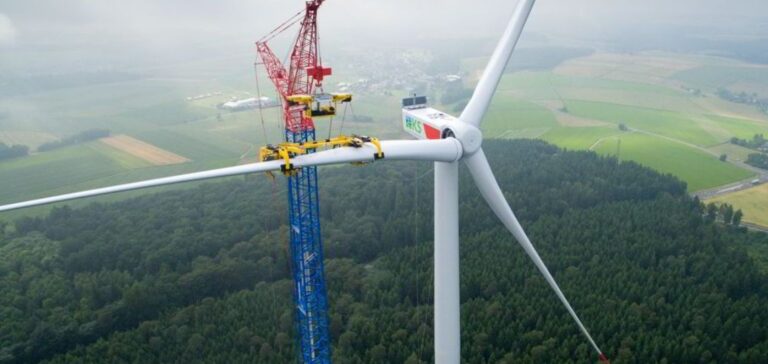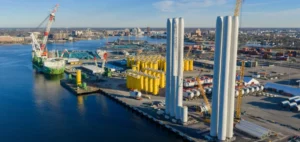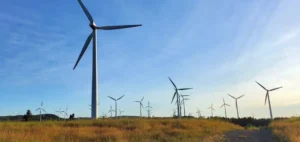Nordex has reached a significant milestone in wind energy with the installation of its N175/6.X turbine on a hybrid tower reaching 179 meters, the highest ever designed by the company. This project, located in Santow, Germany, demonstrates a strategic evolution in delivering solutions for low-wind areas.
A technical response to low-wind challenges
The hub height, reaching 179 meters thanks to the new hybrid tower, allows better access to wind resources in areas where wind speeds are limited. The structure is based on a 119-meter concrete base combined with a steel upper section, a technical choice optimizing both robustness and flexibility. With a nominal capacity of 6.8 MW and a rotor diameter of 175 meters, this turbine is designed to maximize energy output in demanding conditions.
A strategic milestone for wind energy projects
This installation marks the deployment of the second pilot turbine of the N175/6.X model, following a first commissioning in Schleswig-Holstein in 2024. By testing different configurations—a 112-meter steel tubular tower and a 179-meter hybrid tower—Nordex evaluates the technical and operational performances required to meet diverse market needs.
These technological advancements align with an industry trend where taller turbines become a competitive advantage for capturing more stable wind flows and enhancing yields. The developments Nordex has made to its concrete segments, used for over 15 years, demonstrate a continuous capacity to adapt to market demands.
Ambitions for European markets
Germany is emerging as a strategic market for this model due to its favorable regulatory framework and demand for high-performing infrastructures in low-wind environments. Nordex also plans to deploy variants with hub heights reaching up to 199 meters, reinforcing its ability to offer tailored solutions for large-scale projects.
José Luis Blanco, CEO of Nordex, emphasized that these innovations address a clear market need: more efficient turbines capable of optimizing energy output even in challenging conditions. Strong client interest in this hybrid technology confirms that this approach aligns with the sector’s current priorities.
Essential technical validation
The installation of the turbine in Santow goes beyond commissioning. The coming months will involve a series of in-depth tests, including acoustic, electrical, and component validation measurements. These analyses are critical to ensuring optimal reliability before large-scale deployment.
Simultaneously, the pilot project also serves to refine manufacturing, transportation, and installation processes, which are essential for cost and timeline management in future projects.






















